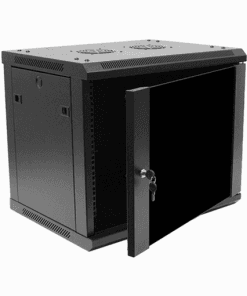Cabinet FAN
KSh 1,700.00 Original price was: KSh 1,700.00.KSh 1,500.00Current price is: KSh 1,500.00. excl. VAT
KEY FEATURES
- Easy installation, stable performance quiet cooler.
- Can be laid flat or stand upright, perfect for cooling Router, AV receiver, Blue-ray, TV/ Box, Router, device.
- Silent cooling fan
- Reducing equipment working environment temperature, prolong the service life of equipment.
Buy online at best prices in Nairobi, Kenya
Visit our store and enjoy:
- Genuine, brand new, sealed stock
- Price-match against authorized dealers
- Installation & configuration services available
- Expert advice on compatibility with your network
Cabinet Fan Specifications and details
Cabinet fan plays a crucial role in maintaining optimal temperatures within network cabinets or enclosures, ensuring that networking equipment operates efficiently. Here are some common features associated with cabinet fans:
Features
- Size and Form Factor:
- They are available in various sizes, typically measured in millimeters (mm) or inches. The form factor may include different fan sizes to suit the dimensions of the cabinet or enclosure.
- Airflow Capacity:
- The airflow capacity is a key specification, measured in cubic feet per minute (CFM) or cubic meters per hour (m³/h). It indicates the volume of air the fan can move within a given time, contributing to effective cooling.
- Voltage and Power Consumption:
- Cabinet fans operate on specific voltage levels, such as 12V or 24V, and have associated power consumption ratings. Understanding these specifications is crucial for proper integration into the power supply system.
- Noise Level:
- The noise level of the fan, measured in decibels (dB), is an important consideration for environments where low noise operation is essential, such as office spaces or data centers.
- Speed Control:
- Some cabinet fans come with adjustable speed settings, allowing users to control the fan’s rotational speed. Variable speed settings can be useful for balancing cooling needs and noise levels.
Additional Features
- Bearing Type:
- Cabinet fans may use different bearing types, such as sleeve bearings or ball bearings. Ball bearings often offer longer lifespan and durability, especially in continuous operation.
- Fan Blade Design:
- The design of the fan blades influences the airflow pattern and efficiency. Fans may feature different blade designs optimized for airflow and static pressure.
- Thermal Sensors:
- Advanced cabinet fans may include built-in thermal sensors that automatically adjust fan speed based on the temperature inside the cabinet. This feature helps optimize cooling performance.
- Mounting Options:
- Cabinet fans are designed for easy installation with various mounting options, such as screws or snap-in mechanisms. Some models may also support tool-less installation for convenience.
- Construction and Durability:
- The fan’s construction material and build quality are essential for durability. Fans designed for use in cabinets are often built with materials that resist corrosion and wear.
Cabinet FanSpecifications
- Grill: Double-sided black metal Air Volume: 54.56CFM
- Rotate Speed: 1500RPM±10%
- Noise: 27 dB +-10%
- Voltage: 5.0 V
- Current: 0.3A
- Ambient Temperature (℃): – 10 ℃ ~ 45 ℃
- Color: Black
- Size: 120*120*30mm

Be the first to review “Cabinet FAN” Cancel reply
You must be logged in to post a review.
Related products
-10%
Network Cabinet | Data Cabinet | Server Racks
-10%
Network Cabinet | Data Cabinet | Server Racks
-10%
Network Cabinet | Data Cabinet | Server Racks
-7%
Network Cabinet | Data Cabinet | Server Racks
-10%
Network Cabinet | Data Cabinet | Server Racks
-10%
Network Cabinet | Data Cabinet | Server Racks













Reviews
There are no reviews yet.